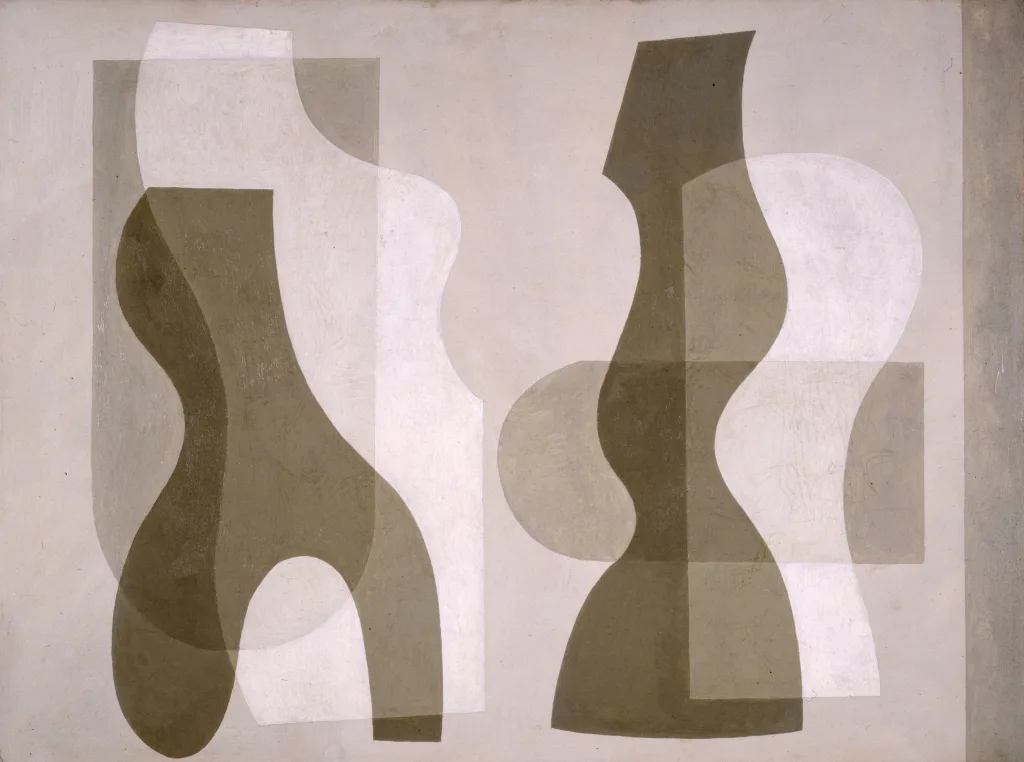Imagine creating a tranquil oasis in your backyard – a Zen garden meticulously designed to bring peace and harmony to your daily life. As you embark on this journey, one question arises: what shape is best suited for a Zen garden? Should you opt for the soothing curves of a circular design, or the clean lines of a rectangular layout? In this article, we will explore the various shapes that suit Zen gardens, uncovering the secrets of how each shape can enhance your zen-like experience. Discover the shape that resonates with your soul and embark on a transformative journey into the world of Zen gardening.

Understanding the Concept of a Zen Garden
a Zen Garden, also known as a Japanese rock garden or dry landscape garden, is a traditional Japanese garden design that aims to create a tranquil and harmonious environment for meditation and contemplation. The concept of a Zen garden originated in Japan during the 14th century and is deeply rooted in Zen Buddhism, emphasizing simplicity, minimalism, and the appreciation of natural beauty.
Origins of Zen Garden
Zen gardens have their roots in the tradition of Japanese rock gardens, which date back to the Heian period (794-1185). These gardens were influenced by Chinese landscape paintings and were initially designed as places for spiritual reflection and meditation. The Zen Buddhist monks later developed the concept of Zen gardens, incorporating principles of Zen philosophy into the design and arrangement of the garden elements.
Philosophical Underpinnings
The philosophy behind Zen gardens is deeply rooted in Zen Buddhism and its emphasis on mindfulness, simplicity, and the contemplation of nature. Zen gardens are often seen as a reflection of the Zen principles of emptiness, impermanence, and interconnectedness. They are designed to create a sense of serenity and evoke a feeling of unity with the natural world.
Common Components of a Zen Garden
Zen gardens typically consist of a few key components that work together to create a harmonious and serene atmosphere. These components may include:
-
Gravel or Sand: The gravel or sand serves as the foundation of the garden, representing the expanse of the ocean or a riverbed. It is raked in patterns to create a sense of movement and evoke a feeling of tranquility.
-
Rocks or Stones: Rocks or stones are strategically placed within the garden to represent mountains, islands, or other natural elements. They are selected for their shape, texture, and color, and arranged in a way that creates a harmonious composition.
-
Plants: Minimal and carefully selected plants, such as moss, small shrubs, or bonsai trees, are often incorporated into Zen gardens. These plants are chosen for their ability to withstand various weather conditions and to enhance the overall natural beauty of the garden.
-
Lanterns or Statues: Lanterns or statues are sometimes placed in Zen gardens to add visual interest and symbolic meaning. These elements can represent various aspects of nature or Buddhist teachings and can serve as focal points for meditation and contemplation.

Important Factors when Choosing a Shape for a Zen Garden
The shape of a Zen garden plays a crucial role in its overall design and functionality. When choosing a shape for a Zen garden, consider the following factors:
Intended Use
Consider how you plan to use the Zen garden. If you are looking for a space solely dedicated to meditation and contemplation, a smaller and more intimate shape may be more suitable. On the other hand, if you envision using the garden for social gatherings or outdoor activities, a larger and more open shape may be preferable.
Space Limitations
Take into account the available space for your Zen garden. If you have limited space, consider opting for a smaller and more compact shape that can fit comfortably within your chosen area. Conversely, if you have ample space, you have the flexibility to explore larger and more expansive shapes.
Incorporation of Natural Elements
Consider how the shape of the Zen garden can incorporate and harmonize with the natural elements surrounding it. The shape should complement and enhance the existing landscape, taking into account factors such as existing trees, topography, and architectural features.
Best Shapes for Small Zen Gardens
In smaller Zen gardens, the choice of shape becomes even more crucial to create an impactful and harmonious design. Here are some recommended shapes for small Zen gardens:
Square or Rectangular Zen Gardens
Square or rectangular shapes are popular choices for small Zen gardens due to their simplicity and versatility. These shapes can be easily adapted to fit into various corners or small spaces, allowing for a focused and intimate meditation area. They also provide a sense of balance and structure, which are key elements in Zen philosophy.
Circular Zen Gardens
Circular shapes are a great option for small Zen gardens, as they create a sense of unity and continuity. The circular shape can symbolize the cycle of life and the interconnectedness of all things. It also allows for a more fluid and organic design, which can help create a calming and soothing atmosphere.
Irregular-shaped Zen Gardens
For those seeking a more unconventional approach, irregular-shaped Zen gardens can be a unique and creatively inspiring choice. Irregular shapes can mimic the natural flow of landscapes and create a sense of spontaneity and movement. This can add an element of surprise and intrigue to a small Zen garden, making it feel expansive and dynamic despite its limited size.

Best Shapes for Large Zen Gardens
In larger Zen gardens, the shape of the garden can have a significant impact on the overall visual impact and functionality. Here are some recommended shapes for large Zen gardens:
Linear or Long Rectangular Zen Gardens
Linear or long rectangular shapes are well-suited for larger Zen gardens, as they can create a sense of depth and perspective. This shape is often used to create a calming, contemplative pathway or to divide different areas within the garden. The linear design can guide the viewer’s gaze and create a sense of harmony and balance.
Landscape Echoing Zen Gardens
Landscape echoing shapes are designed to mimic the surrounding natural landscape, such as hills, valleys, or rivers. This type of shape is often used in larger Zen gardens to create a seamless integration with the environment, creating a sense of unity and oneness with nature. This shape can also create a visual illusion of a larger space, making the garden feel more expansive.
Abstract Shaped Zen Gardens
For those who prefer a more contemporary and artistic approach, abstract-shaped Zen gardens can offer a unique visual experience. Abstract shapes can mimic natural forms or be purely artistic expressions. This shape allows for greater creativity and flexibility in the design, providing an opportunity for personal interpretation and exploration.
Customize Your Zen Garden Based on Function
Apart from the shape, the functionality of a Zen garden can also be customized to serve specific purposes or cater to individual preferences. Here are some examples of customized Zen garden designs:
Meditation Focus Zen Gardens
If you primarily intend to use your Zen garden for meditation and mindfulness practices, consider incorporating elements that enhance the meditative experience. This can include features such as a central seating area, a stone pathway for walking meditation, or a simple water feature for added tranquility.
Nature Mimicry Zen Gardens
For nature enthusiasts or those seeking a deeper connection with the natural world, a nature mimicry Zen garden can be designed to replicate specific landscapes or ecosystems. This can be achieved by carefully selecting and arranging plants, rocks, and other elements that mimic the desired natural environment, such as a forest, a mountain, or a Zen garden.
Interactive Zen Gardens
If you plan to use your Zen garden for social gatherings or as a space for interaction and relaxation, consider adding interactive elements. This can include features such as stepping stones, seating areas, or a sandpit for children. By incorporating these elements, your Zen garden can become a versatile space that caters to various activities and encourages social engagement.
Implementing Water Features in a Zen Garden
Water features can be a captivating addition to a Zen garden, further enhancing its aesthetic appeal and creating a soothing ambiance. When incorporating water features, consider the following factors:
Influence of Water Feature on Garden Shape
The shape of the water feature should complement the overall shape and design of the Zen garden. For example, a rectangular-shaped garden may benefit from a long, narrow water feature, while a circular-shaped garden may require a centrally placed circular pond. The water feature should harmonize with the natural flow of the garden and create a sense of balance.
Types of Water Features Suitable for Different Shapes
There are various types of water features that can be incorporated into a Zen garden, depending on the shape and size of the garden. Some common water features include ponds, waterfalls, cascades, or even small streams. Consider the scale and proportion of the water feature in relation to the surrounding elements to maintain a harmonious and balanced composition.
Symbolic Significance of Different Zen Garden Shapes
Each shape in a Zen garden holds symbolic significance and can convey different meanings and interpretations. Here are some examples:
Circular Shapes and Enclosure
Circular shapes, such as circular pathways or ponds, often symbolize unity, completeness, and the interconnectedness of all things. They represent the cyclical nature of life and the continuous flow of energy. Circular shapes can also create a sense of enclosure and containment, providing a feeling of safety and tranquility.
Rectangular Shapes and Balance
Rectangular shapes, such as rectangular pathways or garden beds, represent stability, order, and balance. They convey a sense of structure and organization, reflecting the Zen philosophy of finding harmony within oneself and the external world. Rectangular shapes can create a sense of serenity and clarity, evoking a feeling of peace and tranquility.
Irregular Shapes and Spontaneity
Irregular shapes, such as winding pathways or asymmetrical rock arrangements, symbolize spontaneity, imperfection, and the beauty in the unexpected. These shapes reflect the unpredictability and impermanence of life, inviting contemplation of the ever-changing nature of existence. Irregular shapes can create a sense of intrigue and wonder, encouraging a deeper exploration of the self and the world.
How to Create Harmony Regardless of Zen Garden Shape
Regardless of the chosen shape of a Zen garden, there are certain principles that can be applied to create a harmonious and cohesive design:
Use of Space
Efficiently utilize the available space by carefully planning the placement of different elements. Consider the flow of movement within the garden and ensure that there is a balance between open areas and more intimate spaces. Allow for moments of pause and reflection by strategically placing seating areas or alcoves.
Incorporation of Elements
Select and arrange elements, such as rocks, plants, and water features, in a way that creates a sense of balance and unity. The arrangement should be mindful of the chosen shape and should enhance its inherent qualities. Pay attention to the contrast and textures of different materials to create visual interest and depth.
Create Focal Points
Establish focal points within the Zen garden to draw the viewer’s attention and create a sense of visual hierarchy. Focal points can be created through the placement of larger rocks, statues, lanterns, or other distinctive elements. The focal points should be carefully positioned to guide the viewer’s gaze and create a sense of depth and perspective.
Incorporating Other Factors in Zen Garden Shape Decision
In addition to the factors discussed earlier, here are some other considerations that can influence the choice of Zen garden shape:
Influence of Surrounding Architecture
Take into account the existing architecture surrounding the Zen garden. The shape of the garden should complement and harmonize with the architectural style and materials used in the surrounding buildings. This creates a sense of continuity and unity between the garden and its surroundings.
Consideration of Viewer Position for Different Shapes
Think about how the shape of the Zen garden will be perceived from different viewpoints. A shape that looks visually appealing from one angle may not be as aesthetically pleasing from another. Consider the path of approach and the desired visual impact to ensure that the chosen shape is visually engaging from various perspectives.
Seasonal Changes Impact on Zen Garden Shape
Consider how the shape of the Zen garden will interact with the changing seasons. Some shapes may be more suitable for showcasing specific elements or plants during certain seasons. For example, a rectangular shape may be ideal for showcasing cherry blossom trees in the spring, while a circular shape may be better suited for highlighting fall foliage.
Successful Zen Garden Shapes Around the World
Throughout history, various shapes of Zen gardens have been successfully implemented around the world. Here are some notable examples:
Examples of Square or Rectangular Zen Gardens
- Ryoan-ji Temple Garden in Kyoto, Japan: This famous Zen garden features a rectangular shape with carefully arranged rocks on a bed of white gravel. The simplicity and balance of the rectangular shape contribute to the overall sense of tranquility and meditation.
Examples of Circular Zen Gardens
- Daisen-in Zen Garden in Kyoto, Japan: This circular Zen garden features a centrally placed pond surrounded by moss-covered rocks. The circular shape symbolizes the cycle of life and creates a harmonious and balanced composition.
Examples of Irregular-shaped Zen Gardens
- Saiho-ji Temple Garden in Kyoto, Japan: This Zen garden features an irregular-shaped pond surrounded by lush greenery. The irregular shape mimics the natural flow of a river and evokes a sense of spontaneity and movement.
In conclusion, the shape of a Zen garden is an important consideration in its design and functionality. Whether it is a small and intimate space or a larger and more expansive garden, the chosen shape can significantly impact the overall aesthetic appeal and symbolic significance of the garden. By considering factors such as the intended use, space limitations, and incorporation of natural elements, you can choose a shape that aligns with your vision and creates a harmonious and serene environment for meditation and contemplation.


